 Two recent studies by the FTC show that some methods for notifying potential class members of class action settlements are not as effective as courts and counsel might believe. In September, the FTC published a report on two studies it conducted surrounding the effectiveness of combined class certification and settlement notices.
Two recent studies by the FTC show that some methods for notifying potential class members of class action settlements are not as effective as courts and counsel might believe. In September, the FTC published a report on two studies it conducted surrounding the effectiveness of combined class certification and settlement notices.
The Administrator Study compared characteristics of class action settlement administration, like notice methods and compensation amounts, to the settlement claim filing and payout rates. The Notice Study tested variations of email notices among study participants to learn what types of approaches were more successful.
The Administrator Study
The Administrator Study looked at data from 149 consumer class action settlements. These settlements varied in whether they required notice recipients to file a claim to be paid. Across the class actions, the median number of notice recipients was 87,195. The study evaluated the method of notice and the content of the notice to determine if any aspects of class action administration would correspond with increased claims rates and payout rates.
Method of Notice
The overall claims rate was fairly low across the settlements reviewed, with less than 10% of people contacted claiming an award. This rate changed based on what method of notice was used.
The claims rate when class action settlements used a notice packet was about 10%. The claims rate for postcards was 6%. However, when postcards included a detachable claim form, the claims rate rose to 10%.
The rate when using email was the lowest, with only 3% of those contacted making a claim. This low claims rate is in part explained by the facts that only 14% of people who received the email notices opened them and only 20% of those who opened the notices clicked on the associated hyperlink.
There was no difference in claims rates between publication notices and direct notices. Also, when notice was attempted more than once, the claims rate almost doubled.
Notice Content
Several characteristics of the notice’s content corresponded with an increased claims rate. More people claimed a settlement award when the notice used plain English to explain the potential payment and such language was easy to see. Further, inclusion of a claims form in the notice increased the claims rate, but no specific type of form had a higher rate of claims. The length of the notice did not affect the rate of claims.
Amount of Settlement Compensation
Surprisingly, the amount of settlement compensation did not affect the rate of claims. The only factor the amount of compensation affected was the rate of check cashing. When individuals received more money, they were more likely to cash the checks.
The Notice Study
The Notice Study used 8,000 participant responses from a panel of typical internet and email users. The study tested a combination of email sender addresses, subject lines and email body formats to determine which features had an effect on the participant’s likelihood of opening the email and understanding it.
Overall, most participants thought the notice email was an ad and did not understand the process to make a claim. Those who reported being unlikely to open the email thought it was spam or an ad.
The Sender Email Address
Less than half of participants reported they would open the email irrespective of the sender. Even so, slightly more participants reported being willing to open the email from the sender address classaction@uscourts.gov than the senders Sonoro and SonoroJetSettlement.
The Email Subject Line
Study participants were 4% more likely to open the email notice if the subject did not reference a class action or the amount of compensation. Plus, more people thought the email was an advertisement when the subject line included a specific refund amount.
The subject line “Notice of Refund” received the best open rate, with 53% of survey participants choosing to open it. However, the comprehension rate with this subject line was not as high as “Lavin v. Sonoro Technologies Class Action settlement” and “Notice of Class Action Settlement.”
Email Body
When considering the body of the email, the traditional long-form settlement email notice performed best. Study participants were more likely to understand the email, know a refund was likely, and believe refund requirements were easy with the long format.
Study participants were less likely to believe an email notice was legitimate if it was short. The presence of the court seal in the body of the email also added to its effectiveness. The seal made participants 3% more likely to understand the next steps required and believe that a refund was probable.
Practice Pointers for Class Notice Campaigns
Although there will invariably be substantial limits on member participation in class settlements, the FTC’s studies suggest certain notice practices can increase that participation (some of which are intuitive and some not):
- Consider traditional notice packets instead of email notice if direct mail notice is possible.
- Use plain English to explain that there is a potential payment and to explain the claims process. Make this information easy to find for the reader.
- Consider including a claim form with the notice.
- If using email notice:
- Do not include the potential refund amount in the subject line.
- The subject line “Notice of Refund” may be more likely to be opened.
- Use the traditional long-form settlement email format.
- If possible, include the court seal.
While it is speculative to say the FTC studies will provide some type of best practices blueprint for class notice going forward, it makes sense to keep the studies and their results in mind as you are planning settlement notice for the class. After all, potential objectors and their counsel likely will.
